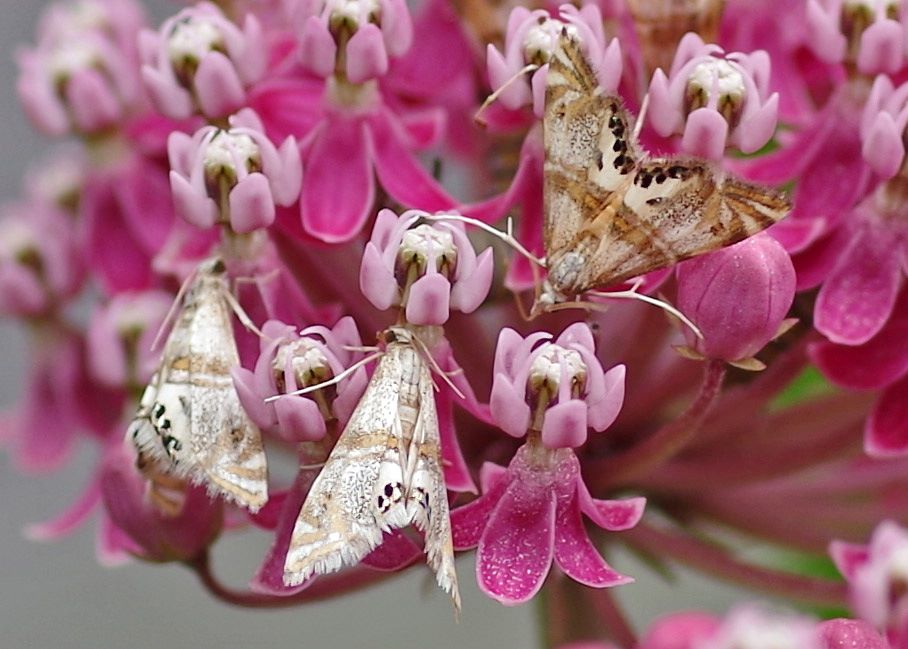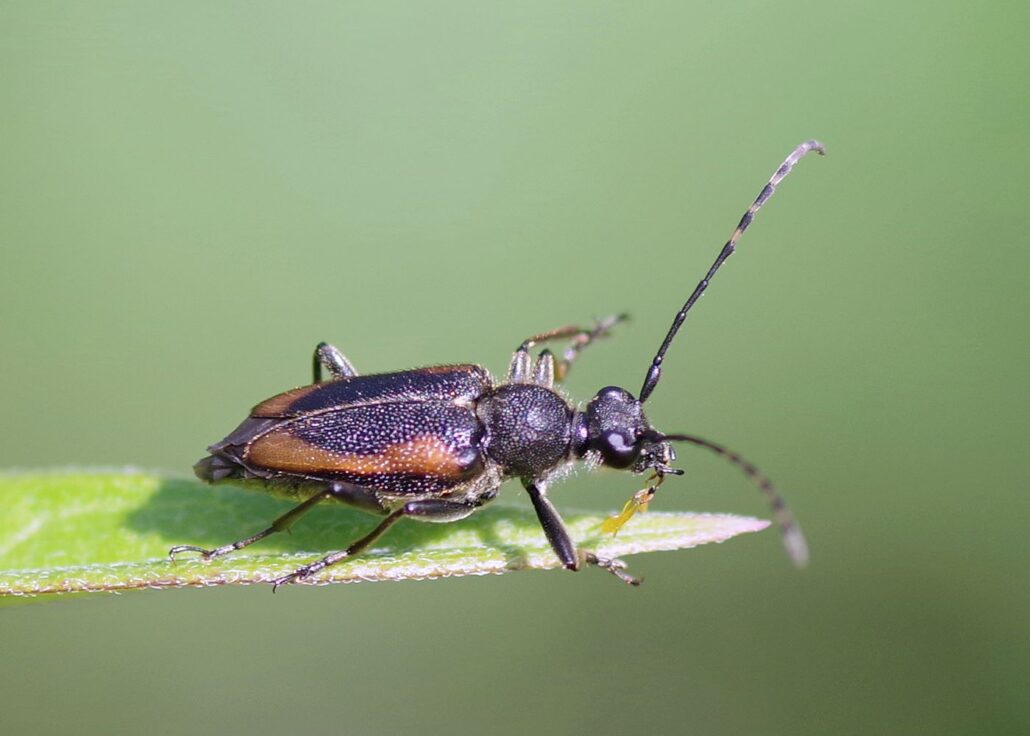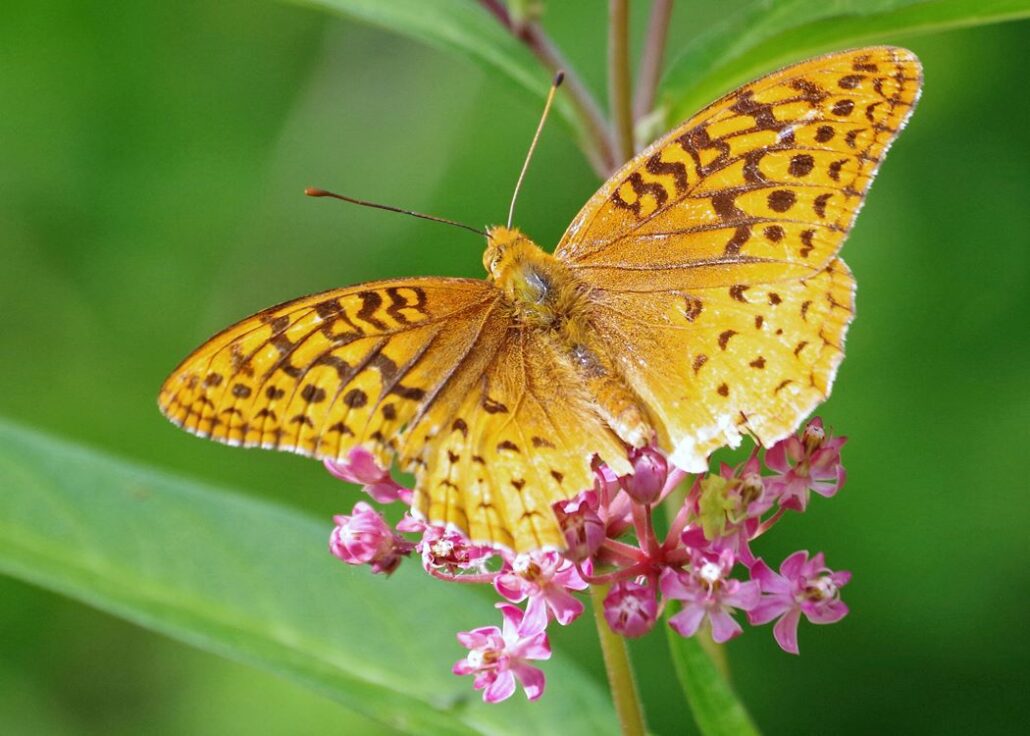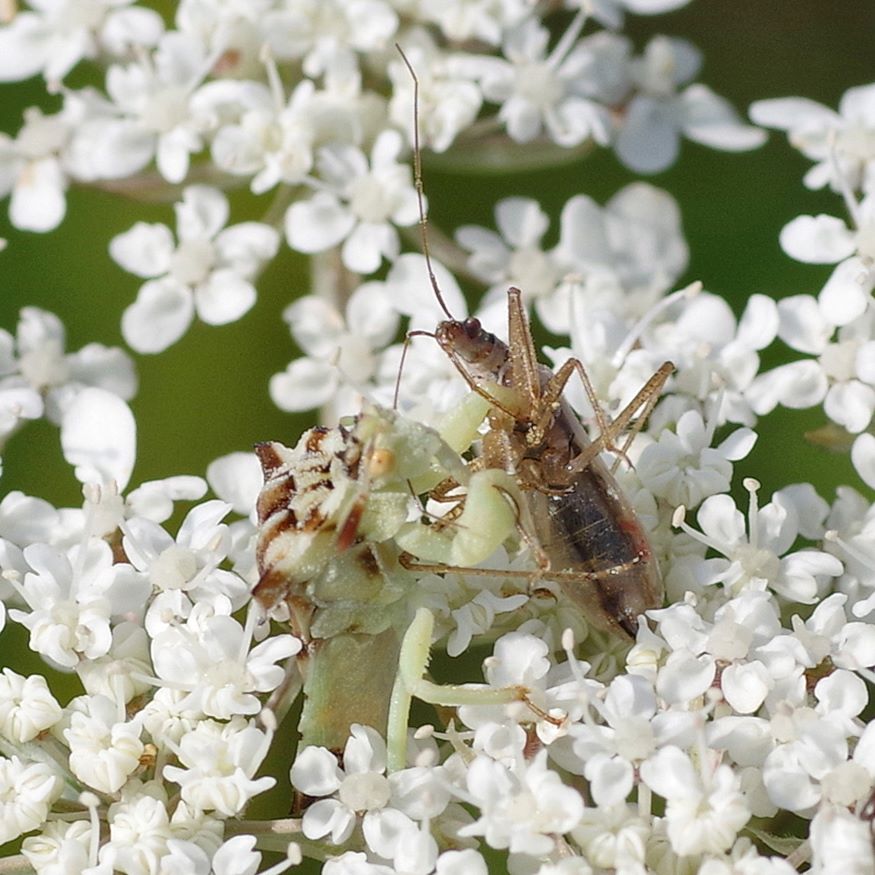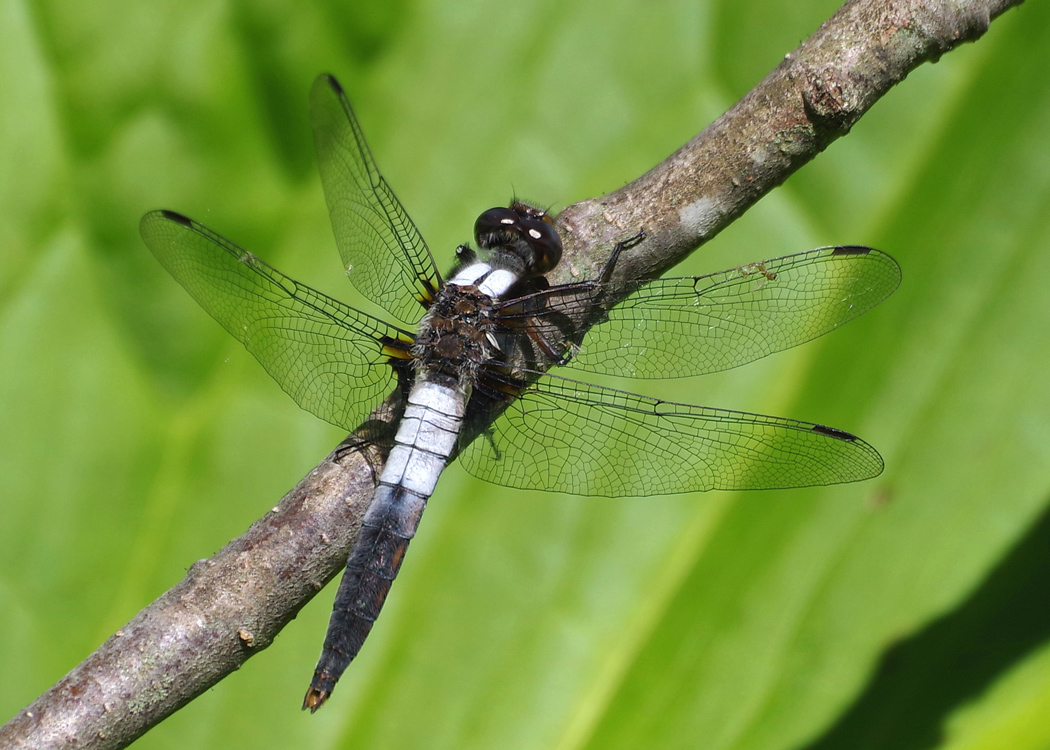
by Kate Redmond
Slices of Spring
Howdy, BugFans,
The BugLady and her camera have been out scouring the uplands and wetlands for insects that will sit still long enough to have their portrait made. Many of today’s bugs have starred in their own BOTWs over the years, and you can find them by Googling “UWM Field Station followed by the name of the insect. Her gut continues to tell her that there simply aren’t as many insects to point her camera at as there were a decade ago.
What did she find in April and May?
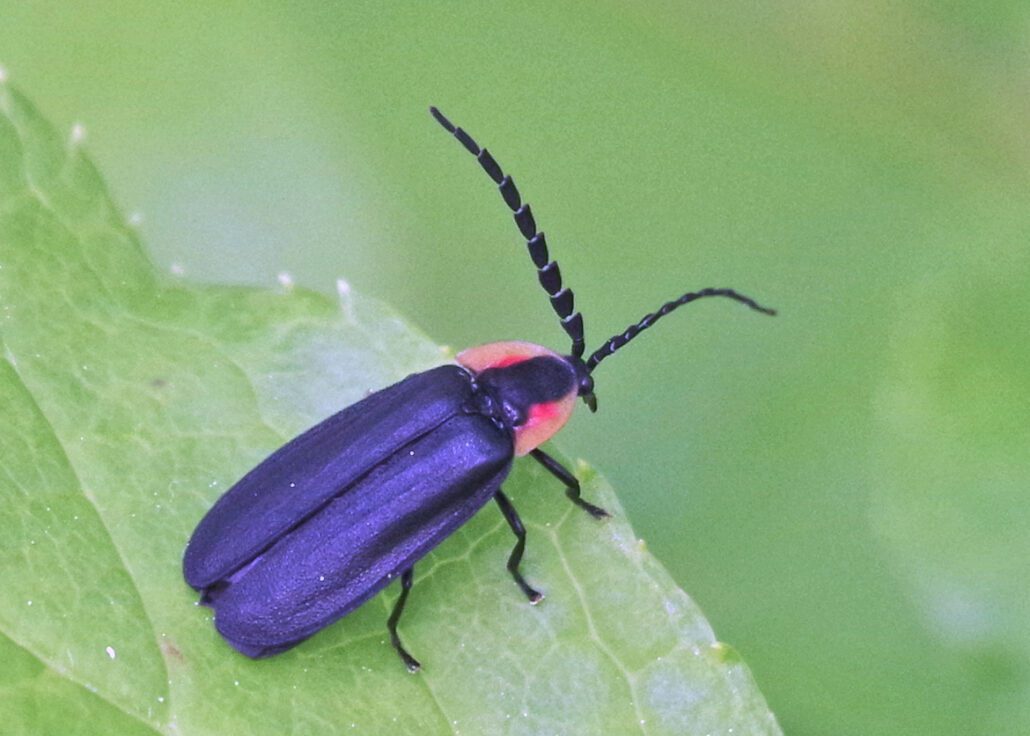
WOODLAND LUCY (Lucidota atra), aka the Black firefly (atra means black). If a lightning bug doesn’t light, is it still a Lightning bug? Yup. Most lightning bugs flash their species-specific light signals at females by night, but some, like the Woodland Lucy, are day flyers (the BugLady starts seeing them in swamps in May, but she usually doesn’t see a light show by their nocturnal relatives until the very end of June). It would be a waste of energy to try to produce a light that competes with the sun, so diurnal lightning bugs communicate via pheromones (perfumes). But, all fireflies make light at some point in their lives, and always as a larva (and even the adult Woodland Lucy makes a weak light for a brief time after emerging as an adult).
Who says “lightning bug” and who says “firefly?” Lightning bug is heard most often in the South and Midwest, and firefly belongs to New England and the West (and Southeastern Wisconsin is close to the border of the two). Someone did a study and hypothesized that people who live in wildfire country prefer firefly, and people who live in thunderstorm country say lightning beetle. The BugLady likes the alternate theory – that you call them whatever your Grandmother called them.
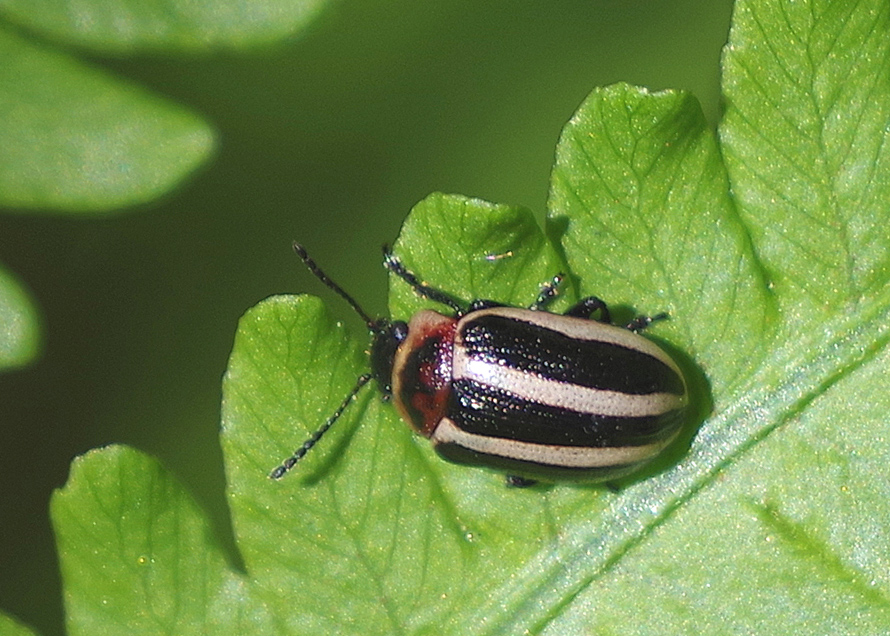
DISONYCHA BEETLE – isn’t this a neat beetle! The BugLady photographed another member of the genus years ago when she was photographing visitors to her pussy willow shrub. It’s in the (huge) leaf beetle family Chrysomelidae, many of whose members are pretty specific about the host plants for their larvae. This one is (probably) a member of the confusing Smartweed Disonycha bunch.
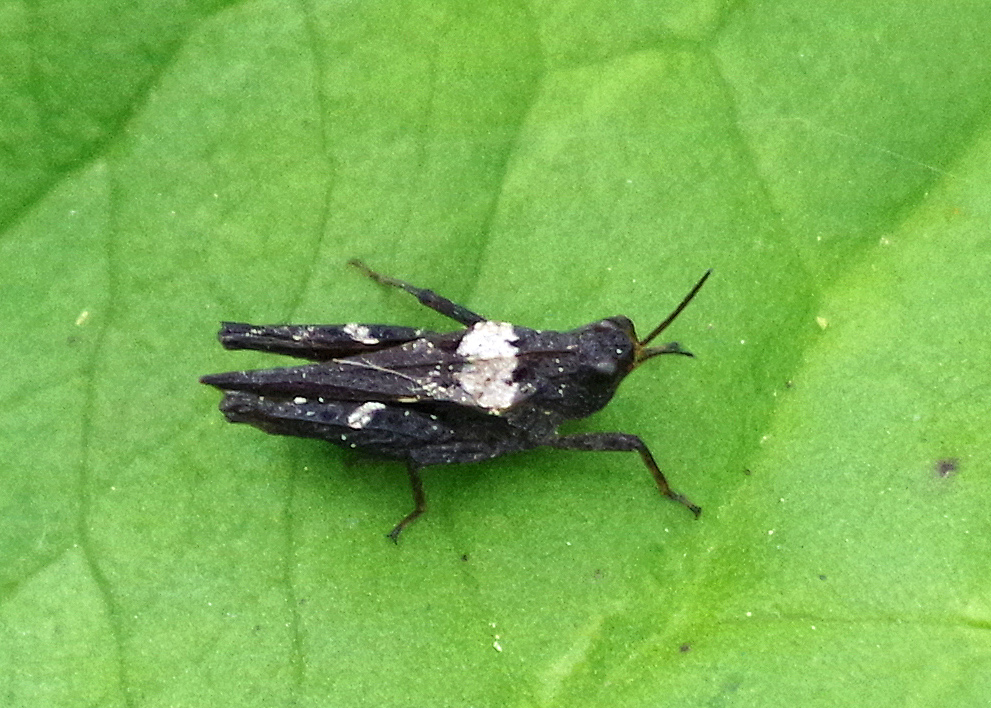
GROUSE LOCUSTS are in the family Tetrigidae (the pygmy grasshoppers), and at a half-inch and less when full grown, pygmy they are! The BugLady usually sees them in wetlands, and some are actually known to swim. They feed on tiny diatoms and algae and aquatic vegetation at the water’s edge.
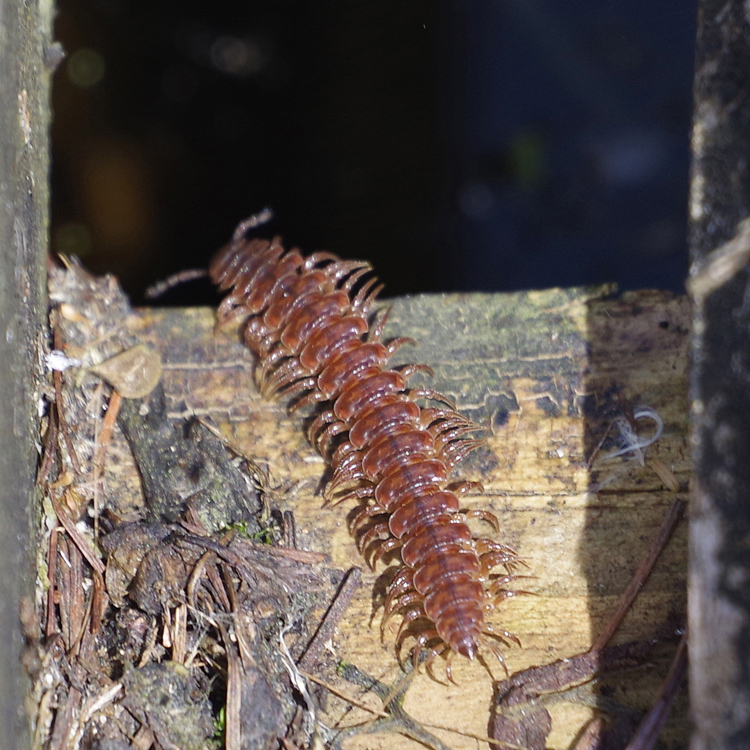
A CENTIPEDE works the boardwalk at Spruce Lake Bog in April.
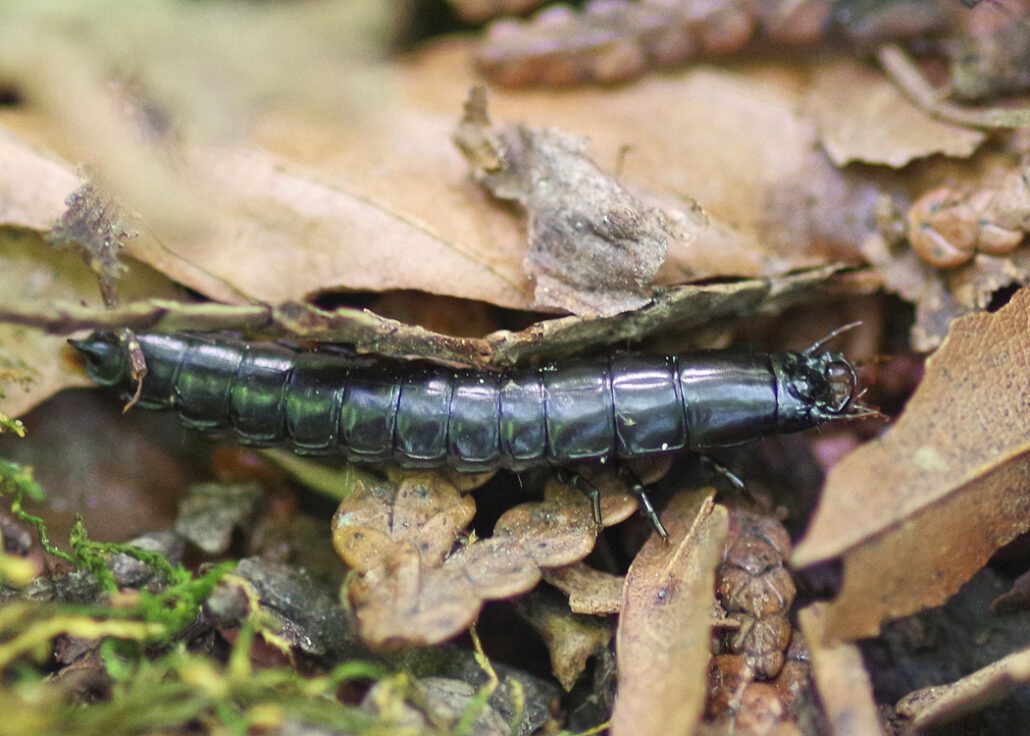
GROUND BEETLE LARVA – Ground beetles (family Carabidae) are a bunch of mainly nocturnal, sometimes-sizeable, mostly predaceous beetles. Some of the big ones have no-nonsense names like Fiery Searcher and Caterpillar Hunter, and although they are called Ground beetles, they may climb trees to find their prey. They’re long-lived, spending a year or two as larvae and then two or three more as adults. No – the BugLady was not inclined to pick this one up.
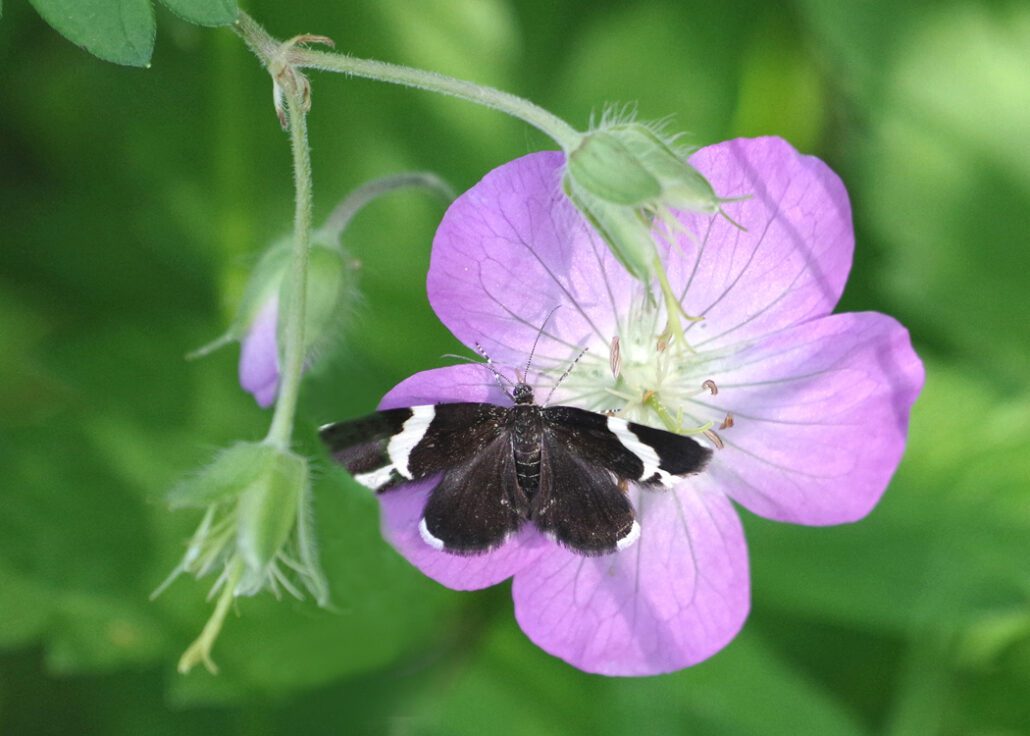
The WHITE-STRIPED BLACK MOTH (Trichodezia albovittata) is a small (1” wingspan) day-flying moth that’s often mistaken for a butterfly. It’s found in wetlands because its caterpillar’s food is Impatiens/Jewelweed/Touch-me-not. Like other members of the moth family Geometridae, it has tympanal organs (ears) at the base of its abdomen so that it can hear the echolocation calls of bats. Since it’s diurnal, its ears are superfluous, but it can hear ultrasound (which suggests to evolutionary biologists that its day-flying habit is a recent one).
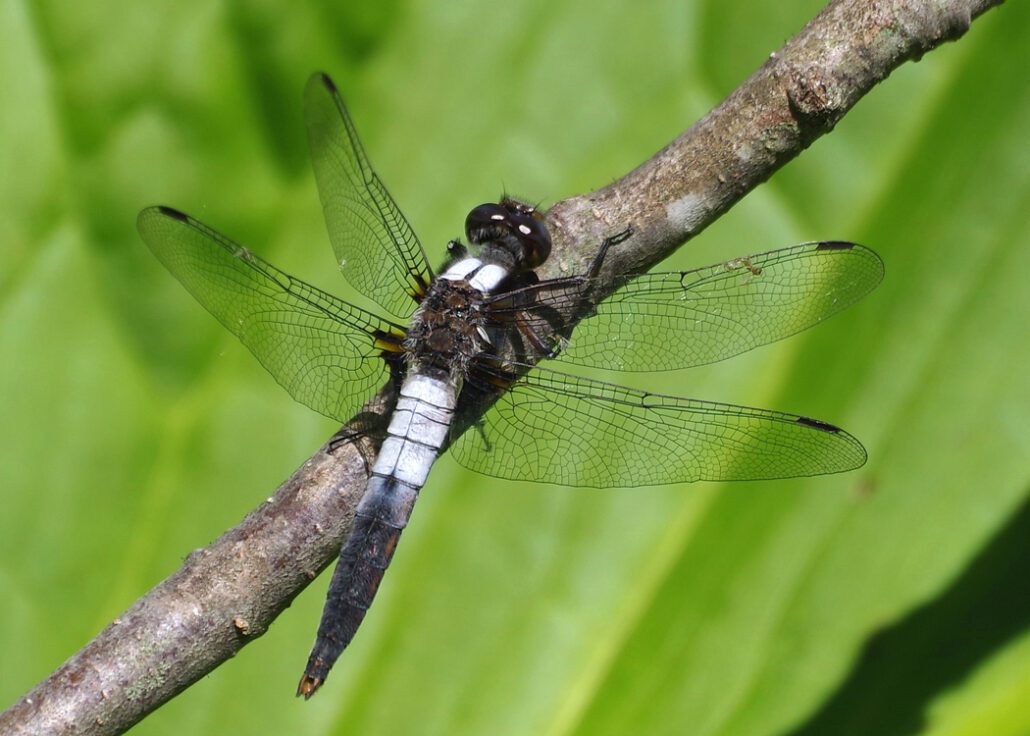
CHALK-FRONTED CORPORALS are one of our earliest dragonflies – the BugLady recalls seeing recently-emerged corporals by the hundreds over a dirt road on warm, spring days.
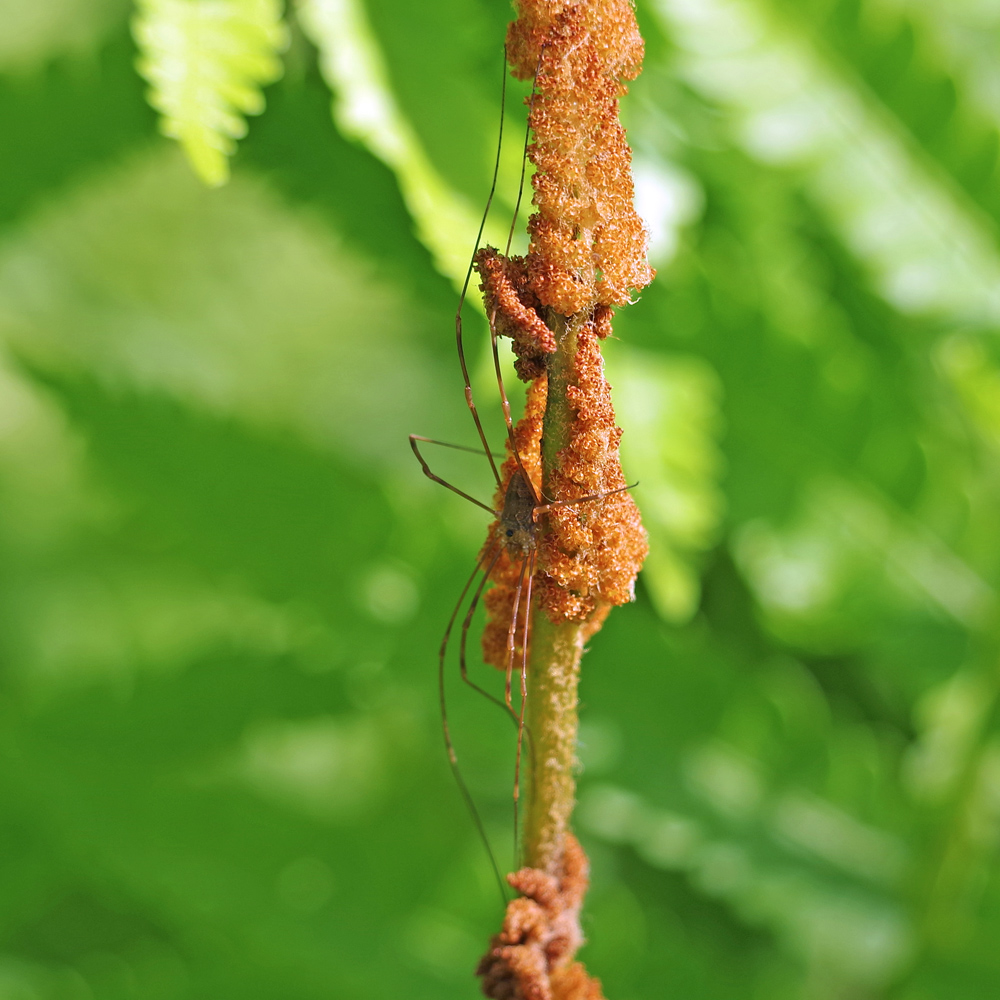
DADDY LONGLEGS (aka Harvestmen) are not true spiders, though they do have eight legs. The best description that the BugLady has read is that lacking a sharp division between their two body parts (cephalothorax and abdomen), they look like Rice Krispies with legs. This one is well-camouflaged on the fertile stalk of a cinnamon fern.
The BugLady may have to have this engraved on her gravestone (oh wait, she’s being scattered) – DADDY LONGLEGS DO NOT BITE PEOPLE! Also, counter to both urban and rural legend, they are NOT the most venomous animal on earth!!! The BugLady does not care what your cousin told you, or the person who claims to be allergic to their bite. They have tiny jaws, and unlike the true spiders, they do not pierce their prey and then pump in chemicals from venom glands (no venom glands) (and they have no stinging apparatus). They just sit there and chew off tiny (tiny) pieces. Got it?
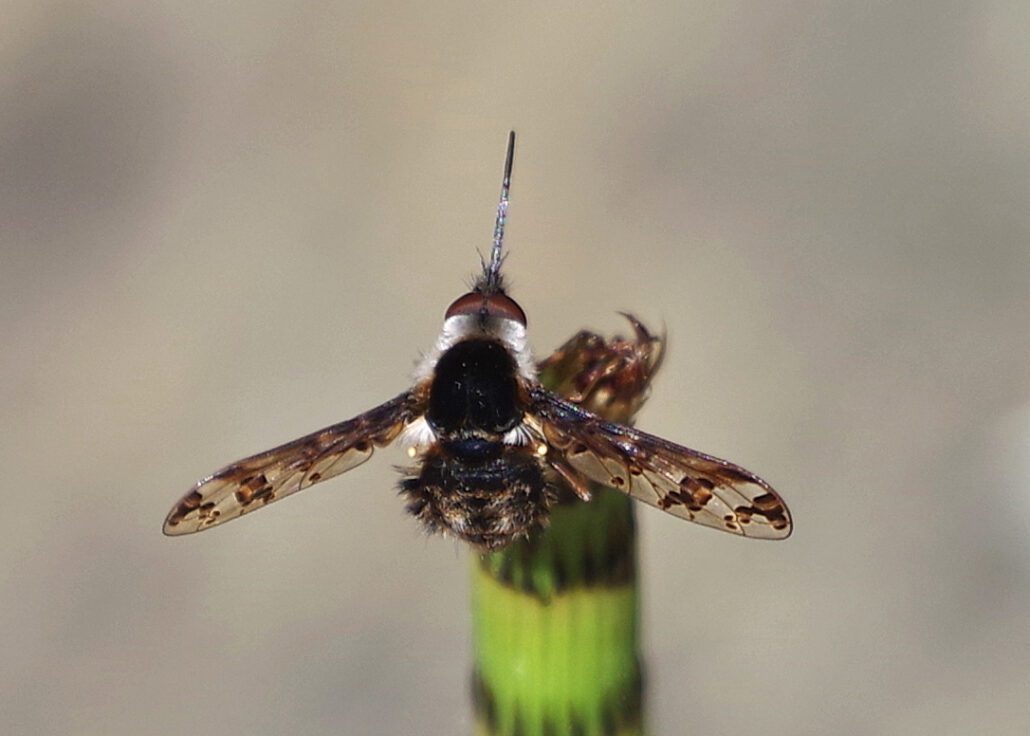
The BEAUTIFUL BEE FLY (Bombylius pulchellus) truly is (pulchellos means “little beauty”)! This small fly (maybe ¼”) was photographed in a wetland in mid-May. Bee fly larvae are parasitoids of a variety of insect eggs and larvae – this one targets the sweat bees, which are among our earliest pollinators (not to worry – the system is in balance).
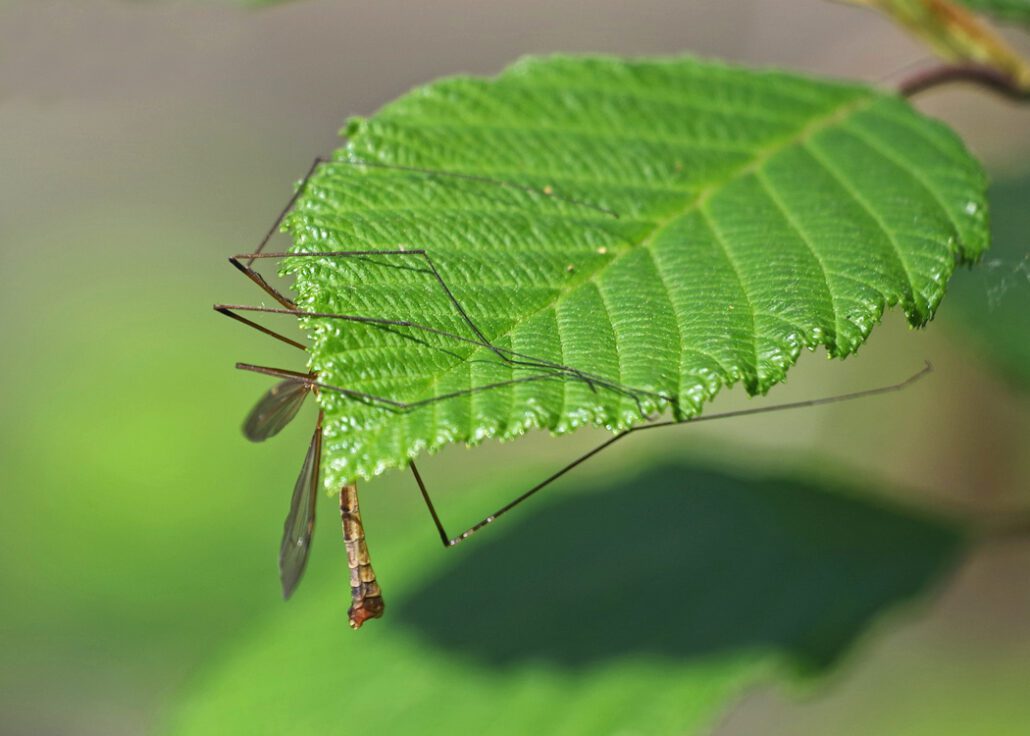
CRANE FLY – there are a number of families of crane flies, plus some near-relatives, and they are often collectively called daddy longlegs (though they’re not spiders) and mosquito hawks and skeeter-eaters (though they don’t catch or eat mosquitoes). What they do, is look like giant mosquitoes when they land on the other side of your window screen at night https://bugguide.net/node/view/2360312/bgimage, but they’re completely harmless. The “crane” in crane fly reflects their long, long legs – they’re somewhat awkward flyers and even more awkward landers. Like the Daddy longlegs, they’re reputedly extremely venomous (and now it’s time to introduce the third member of our “daddy longlegs trio,” the cellar spider. Crane flies are thought to be venomous because they look like cellar spiders (https://bugguide.net/node/view/2170770/bgimage), but, alas, cellar spiders only have very weak venom).
How do these things get started, anyway?
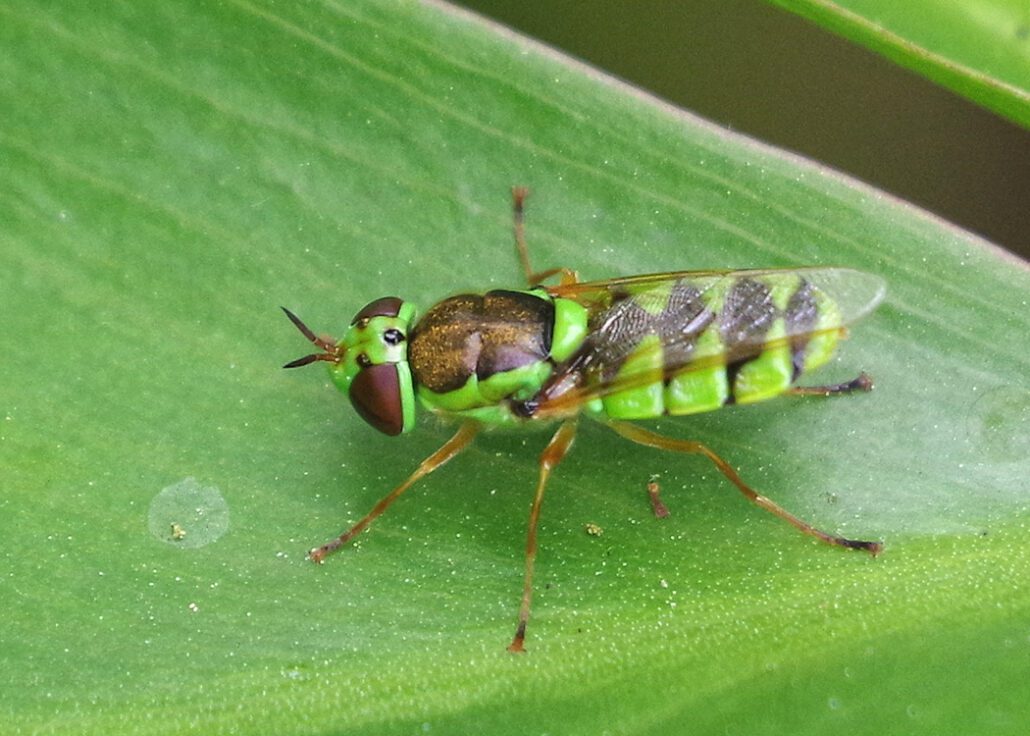
SOLDIER FLY – it’s always a little startling to come across a lime-green fly!
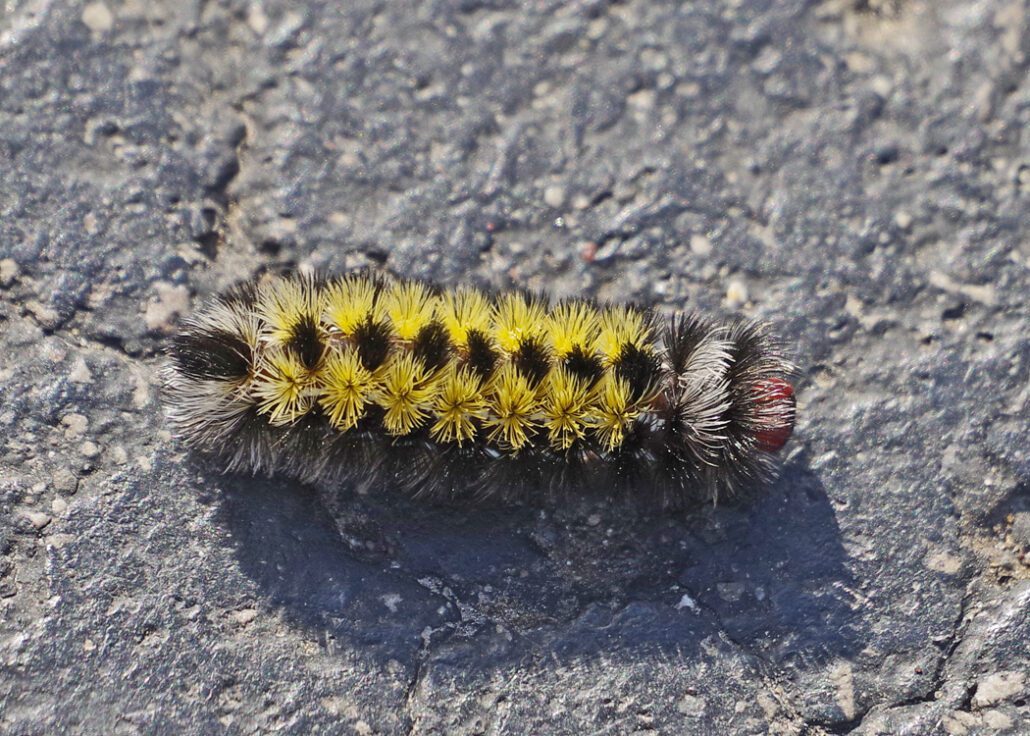
This VIRGINIA CTENUCHA MOTH CATERPILLAR was photographed in April, but the BugLady has found them walking around on mild winter days. The cute caterpillar will morph into a stunning moth https://bugguide.net/node/view/1036503/bgimage that looks butterfly-ish until it lands on a leaf and immediately crawls underneath. Despite its name, it’s a moth with more northerly affiliations.
The (great) Minnesota Seasons website lists three defense strategies:
- Aposematism: The metallic blue color of the thorax and abdomen mimics wasps which may be noxious to predators.
- Sound production: A specialized (tymbal), corrugated region on the third section of the thorax (metathorax) produces ultrasonic sounds which interfere with (“jam”) the sonar of moth-eating bats.
- Pyrrolizidine alkaloid sequestration: Caterpillars acquire and retain naturally produced toxic chemicals (pyrrolizidine alkaloids) from the plants they eat.
RED-SPOTTED PURPLE CATERPILLARS are hard to distinguish from those of the very-closely-related Viceroy and White Admiral caterpillars, and their food plants overlap, too. The caterpillars overwinter in a leaf that’s still attached to the tree, rolled up and fastened with silk.
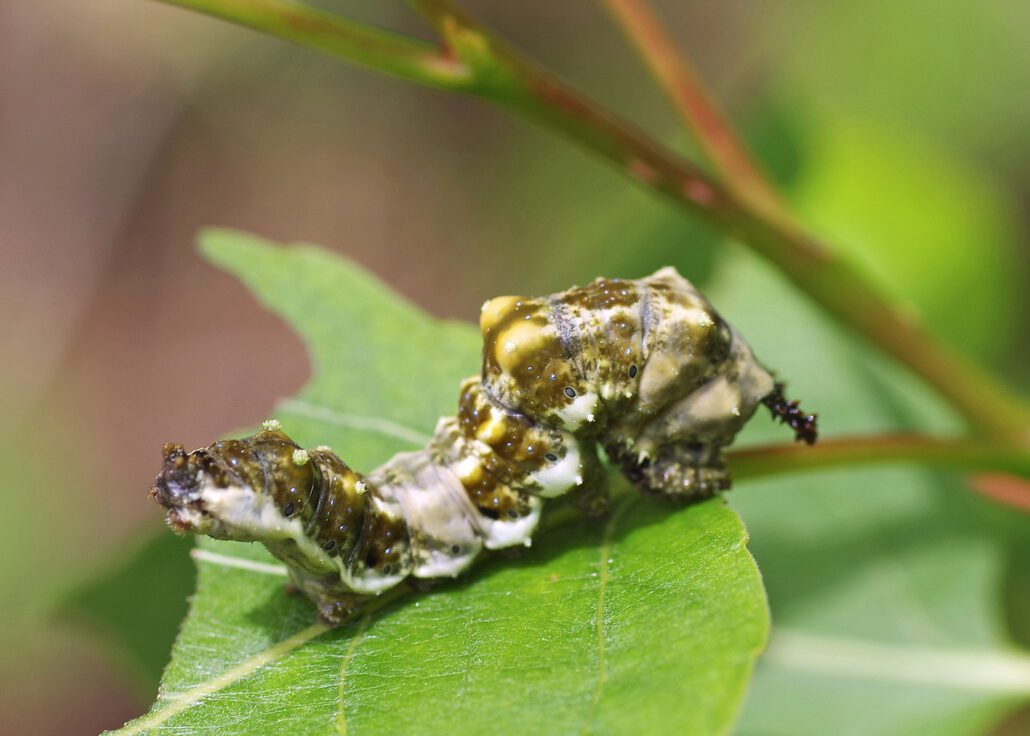
Red-spotted Purple? The purple part https://bugguide.net/node/view/1791309/bgimage, and the red-spotted part https://bugguide.net/node/view/1881731/bgimage
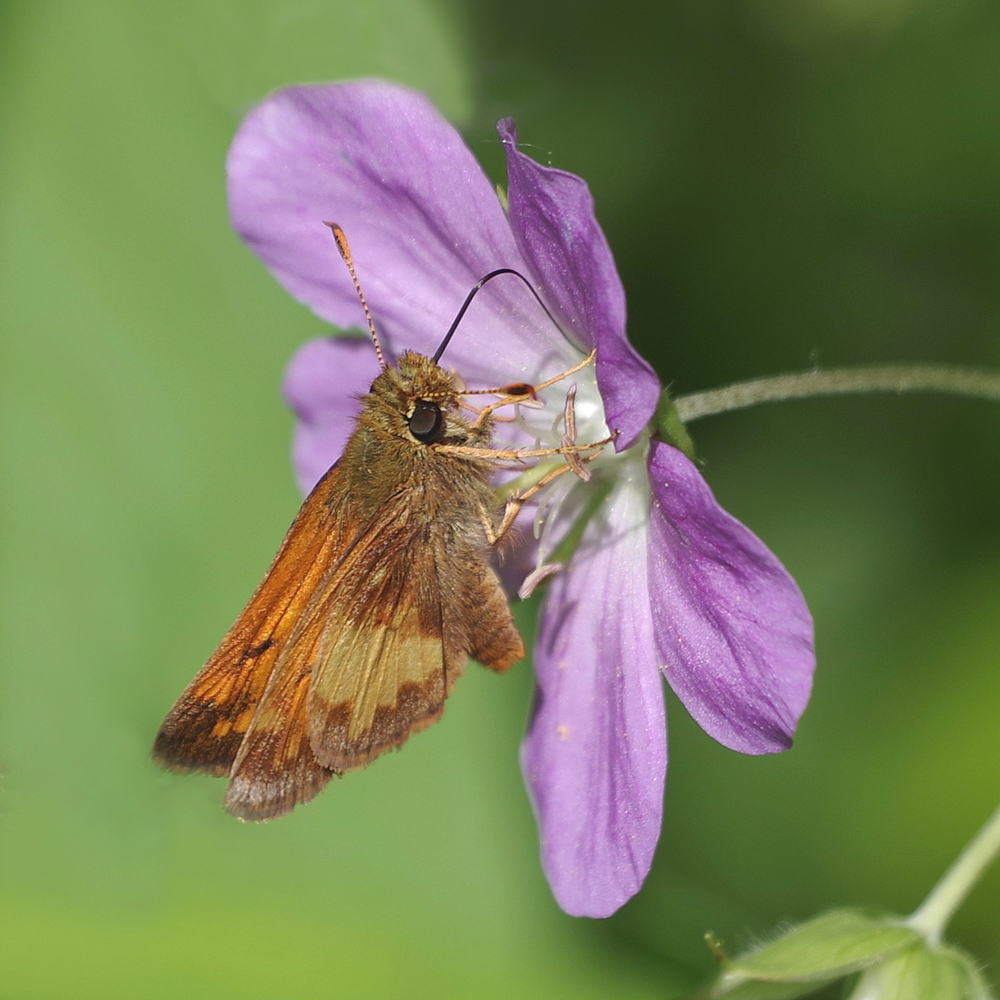
HOBOMOK SKIPPERS (once called the Northern Golden Skipper) are an early butterfly, often decorating the wild geraniums that bloom by the bushel in May. One source says that they are strong flyers that take off quickly when startled. Amen! They are a butterfly of woodland, wetland and grassland edges, where males perch in the sun and fly out to chase intruders.
“Hobomok” is a nod to an early Wampanoag chief.
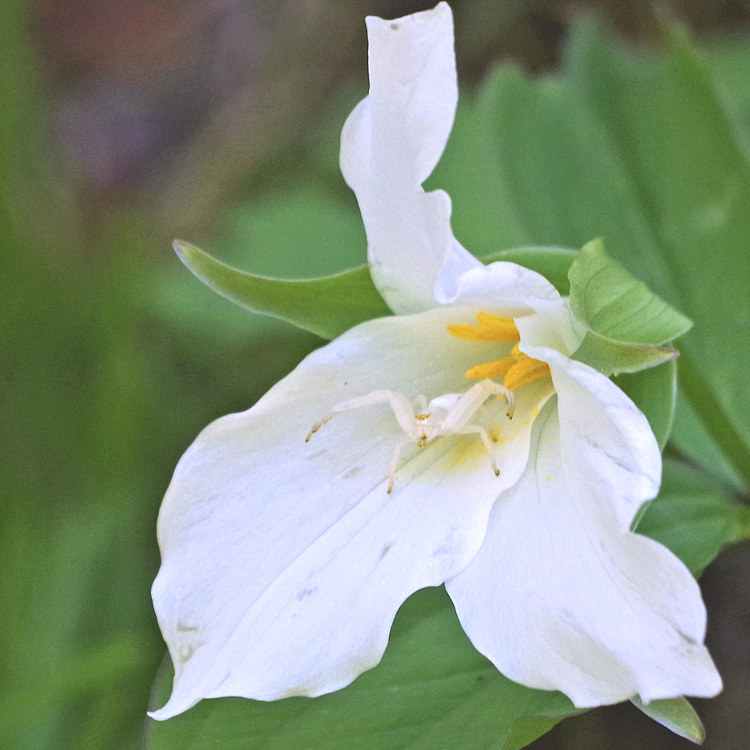
CRAB SPIDER on White trillium – as we all know, the BugLady has a thing for crab spiders because of their ability to hide in plain sight. This one was photographed in early May.
Go outside – Look for Bugs!
Kate Redmond, The BugLady
Bug of the Week archives:
http://uwm.edu/field-station/category/bug-of-the-week/



















